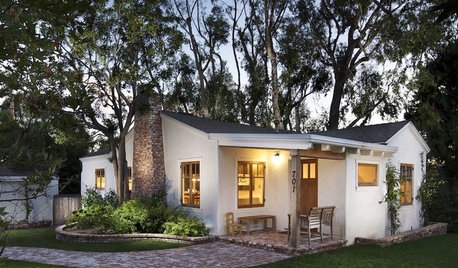Short tree suggestions (under powerlines)
drnuke
13 years ago
Related Stories

MOVING5 Risks in Buying a Short-Sale Home — and How to Handle Them
Don’t let the lure of a great deal blind you to the hidden costs and issues in snagging a short-sale property
Full Story
ARBOR DAY8 Reasons to Plant a Great Tree
Beauty is its own reward, but the benefits of planting the right tree in the right place go way beyond looks
Full Story
HOLIDAYSHow to Care for Your Christmas Tree
Keep your tree looking lush until the last ornament is packed away with these tips for watering, using stands and more
Full Story
HOUZZ TOURSHouzz Tour: Innovative Home Reunites Generations Under One Roof
Parents build a bright and sunny modern house where they can age in place alongside their 3 grown children and significant others
Full Story
GARDENING GUIDES5 Best-Behaved Trees to Grace a Patio
Big enough for shade but small enough for easy care, these amiable trees mind their manners in a modest outdoor space
Full Story
GARDENING GUIDESHow to Keep Your Citrus Trees Well Fed and Healthy
Ripe for some citrus fertilizer know-how? This mini guide will help your lemon, orange and grapefruit trees flourish
Full Story
CHRISTMASReal vs. Fake: How to Choose the Right Christmas Tree
Pitting flexibility and ease against cost and the environment can leave anyone flummoxed. This Christmas tree breakdown can help
Full Story
FALL GARDENING6 Trees You'll Fall For
Don’t put down that spade! Autumn is the perfect time for planting these trees
Full Story
EDIBLE GARDENSHow to Grow 10 Favorite Fruit Trees at Home
Plant a mini orchard in fall, winter or early spring to enjoy fresh-off-the-tree fruit the following year
Full Story
SIDE YARD IDEASNarrow Trees for Tight Garden Spaces
Boost interest in a side yard or another space-challenged area with the fragrance and color of these columnar trees
Full Story





krikit
brandon7 TN_zone7
Related Professionals
Saint Charles Landscape Architects & Landscape Designers · Salisbury Landscape Architects & Landscape Designers · Cockeysville Landscape Contractors · Columbine Landscape Contractors · Fuquay-Varina Landscape Contractors · Hawthorne Landscape Contractors · Indio Landscape Contractors · Mercedes Landscape Contractors · Plainview Landscape Contractors · Stony Brook Landscape Contractors · Wallingford Landscape Contractors · Weslaco Landscape Contractors · Shenandoah Landscape Contractors · Chanhassen Solar Energy Systems · Madison Solar Energy SystemsdrnukeOriginal Author
brandon7 TN_zone7
krikit
brandon7 TN_zone7
brandon7 TN_zone7
myrtleoak
brandon7 TN_zone7
KatyaKatya
myrtleoak
brandon7 TN_zone7
brandon7 TN_zone7
krikit
drnukeOriginal Author
brandon7 TN_zone7
brandon7 TN_zone7
brandon7 TN_zone7
drnukeOriginal Author
brandon7 TN_zone7
KatyaKatya
brandon7 TN_zone7
brandon7 TN_zone7